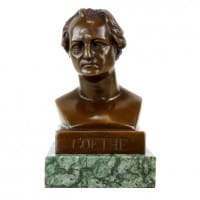What Defines Modern Art Sculpture?
Modern art sculpture emerged as a response to the rigid rules of classical and traditional sculpture. Rather than focusing solely on realism, modern artists began to emphasize concept, abstraction, and emotional resonance. This new language of form turned the art world on its head, allowing for the exploration of unconventional ideas, asymmetry, abstraction, and the raw energy of materials themselves.
Unlike traditional sculptures that often depict mythological or religious themes, modern sculpture tends to be more personal, introspective, and thought-provoking. Each piece is a dialogue between the artist and the viewer — open to interpretation and rich with layers of meaning.
The Power and Beauty of Abstract Sculpture
At the heart of modern sculptural art lies abstract sculpture. These artworks abandon literal form to focus instead on pure shape, color, texture, and movement. Without direct representation, sculpture art abstract pieces allow the viewer to engage with them on a visceral level — evoking emotion without the need for words or context.
Abstract sculptures are often:
- Geometric – sharp lines, symmetry, and mathematical elegance
- Organic – fluid shapes inspired by nature, water, or the human body
- Conceptual – minimalist forms infused with philosophical or social ideas
- Experimental – featuring unusual materials, fragmented forms, or kinetic movement
They challenge our perceptions and become catalysts for contemplation, emotion, and inspiration — perfect for modern living and working spaces.
Materials & Craftsmanship – Art in Its Purest Form
The choice of materials in modern sculpture plays a crucial role in defining its character. Our collection includes hand-crafted and artist-cast pieces made from:
- Bronze – For timeless strength and luxurious presence
- Resin and fiberglass – Lightweight, detailed, and ideal for both indoor and outdoor display
- Steel, aluminum, and chrome – Industrial elegance meets modern edge
- Concrete and stone – Rugged beauty for large-scale or outdoor installations
- Wood and mixed media – Natural textures paired with bold modern forms
Every modern art sculpture in our collection is selected for its originality, quality, and ability to evoke emotion — whether minimalist or monumental.
Where Modern Sculpture Belongs
Modern sculptures bring dynamism and sophistication to a wide range of environments. Depending on scale and theme, they can serve as focal points or subtle elements of harmony within a space.
Ideal for:
- Contemporary homes – Living rooms, entryways, lofts, and modern kitchens
- Commercial spaces – Offices, hotels, restaurants, and wellness centers
- Galleries and museums – Statement pieces for curated exhibitions
- Outdoor areas – Patios, gardens, courtyards, and public installations
- Art collectors and designers – Unique works to complement any curated interior
With both small-scale and monumental options, you’ll find modern sculpture pieces that match your design vision, personality, and space requirements.
Why Invest in Abstract and Modern Art Sculpture?
- Original Expression – Reflects individuality and creative depth
- Thought-Provoking – Encourages dialogue and introspection
- Versatile Aesthetic – Fits seamlessly in contemporary, industrial, and minimalist interiors
- Cultural Value – Connects your space to the evolving narrative of modern art
- Timeless Design – Transcends trends, adding enduring sophistication
A carefully chosen abstract sculpture becomes more than art — it becomes a companion piece to your interior philosophy and a lasting expression of your values.
Explore Our Modern Sculpture Collection
Let your space speak with confidence and imagination. Our curated selection of modern art sculpture, including both subtle and statement-making works, offers something for every visionary. From sculpture art abstract pieces to daring and dramatic modern forms, we invite you to explore a world where emotion, creativity, and material converge.
Browse our collection today and discover how a single modern sculpture can transform your environment into an evolving gallery of contemporary thought and timeless design.
































